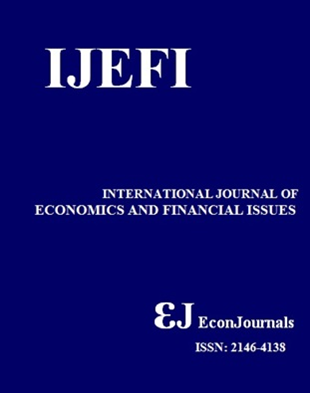Enhancing Portfolio Asset Allocation Efficiency using Blended Covariance Matrices
DOI:
https://doi.org/10.32479/ijefi.18883Keywords:
Mahalanobis Distance, Efficient Frontier, Blended Covariance MatrixAbstract
The Mahalanobis distance (MD) is employed as a threshold for outlier identification in the construction of a blended covariance matrix, aimed at enhancing portfolio allocation and risk management during periods of elevated market volatility. During such times, sample covariance matrices often become unstable, resulting in unrealistic and unconstrained efficient frontiers. This study addresses the inadequacy of the sample covariance matrix for portfolio optimisation under turbulent conditions, where estimation errors can significantly undermine investment performance. By comparing the performance of portfolios constructed using both unaltered covariance matrices and those incorporating a blended approach informed by MD, the analysis demonstrates that the latter method substantially reduces portfolio volatility and improves risk management capabilities. The study finds that even with reduced risk, the phenomenon of an inverted efficient frontier persists during volatile periods, indicating a need for further research. Stabilised covariance matrices offer practical benefits for risk management and asset allocation in such environments. By examining the evolution of covariance matrix stability across both calm and turbulent market conditions, this research contributes to the understanding of covariance instability and highlights the value of the blended approach. The persistence of the inverted frontier underscores the enduring challenges in effective portfolio optimisation.Downloads
Downloads
Published
2025-06-18
How to Cite
Pienaar, R., & van Vuuren, G. (2025). Enhancing Portfolio Asset Allocation Efficiency using Blended Covariance Matrices. International Journal of Economics and Financial Issues, 15(4), 343–355. https://doi.org/10.32479/ijefi.18883
Issue
Section
Articles
Views
- Abstract 108
- FULL TEXT 69




